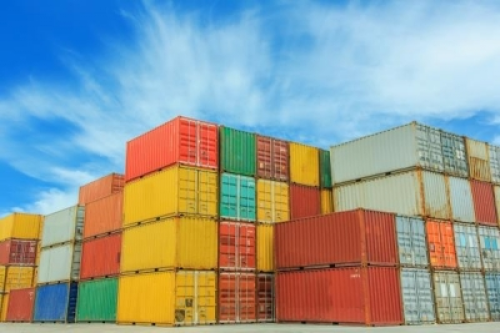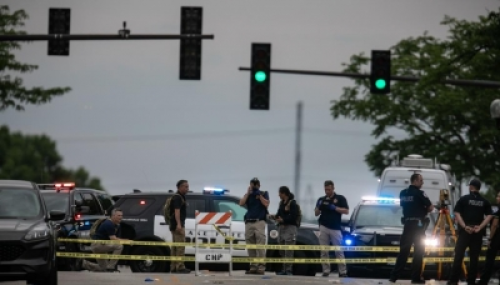By Sumit Kumar Singh New Delhi, Nov 26 (IANS) Thirteen years have gone by since Mumbai was rocked by the worst ever terror attack witnessed by India on November 26, 2008. Since then, the management of coastal (and maritime) security in the country has undergone a paradigm shift. Broadly, the coastal security construct after ‘26/11' has been based on a whole-of-government approach. This includes allocation of coastal security responsibilities to maritime security agencies and setting up of institutional mechanisms for policy and operational coordination among all the stakeholders across multiple levels of governance. "Major initiatives, focused on capacity augmentation and capability development of maritime security agencies and developing Maritime Domain Awareness (MDA), have been undertaken. Community engagement has also emerged as an area of renewed thrust," said a senior government officer. In accordance with the Cabinet Committee on Security directives of 2009, the Indian Navy is designated as the authority responsible for overall maritime security, which includes coastal security and offshore security, and existing Naval Commander in Chiefs are designated as Commander in Chiefs for coastal defence. Indian Navy is to be assisted by the Coast Guard, state marine police and other Central and state agencies for coastal defence. The Indian Coast Guard is additionally designated as the authority responsible for coastal security in territorial waters, including areas to be patrolled by the coastal police. The Marine Police have been made responsible for patrolling of waters up to 12 nm (nautical miles), which is currently limited to 5 nm till the capability and capacity enhancement of the forces. A number of steps have been taken to strengthen coastal and maritime security, which involves active participation by all the stakeholders, including the Ministry of Home Affairs, Ministry of Shipping/DG Shipping, Department of Fisheries, and the Registrar General of India. These steps are reviewed regularly at the highest level by the Cabinet Secretary through meetings of the National Committee on Strengthening Maritime and Coastal Security (NCSMCS). For monitoring at the working level, a steering committee and a sub-committee for review of coastal security are also functional, which meet frequently. Indian Navy-Coast Guard Joint SOPs The Indian Navy-Coast Guard joint SOPs for coastal security have also stabilised over the last 13 years and are reviewed regularly as part of coastal security exercises. They have proved their value in both exercises and some actual contingencies. Setting up of four joint operation centres at Mumbai, Kochi, Visakhapatnam and Port Blair have significantly contributed towards improving inter-agency coordination for coastal security. This mechanism enables execution of centralised command and control in times of need. The joint operation centres and respective operation centres of various agencies are also being regularly exercised through coastal security exercises, which have contributed towards improving inter-agency coordination manifold. To further enhance the coordination among national and state agencies, a pan-India, multi-agency biennial coastal defence exercise -- ‘Sea Vigil' -- was conceptualised and implemented in January 2019. The second edition of this exercise was coordinated by the Indian Navy, which was conducted in January 2021. This exercise has proven to be very beneficial to undertake assessment of the national maritime security construct. Maritime Domain Awareness Generation of accurate Maritime Domain Awareness (MDA) has been a focus area after the 26/11 attacks. Some of the major initiatives have been the establishment of the Coastal Security Network, the National Automatic Identification System (NAIS) chain and the National Command Control Communication and Intelligence (NC3I) Network. The Coastal Security Network (CSN) project, comprising 46 radar stations, has been established by the Coast Guard for electronic surveillance. Phase II of the project, comprising 38 additional static radar stations, eight Mobile Surveillance Systems (MSS), and integration of Vessel Traffic Management Systems (VTMS) for the Gulf of Kutch and Gulf of Khambat is in progress. When fully implemented, the project will double the radar coverage along the Indian coastlines. Presently, based on the licence issued by the Department of Defence Production, BEL has set up similar Coastal Surveillance Radar Systems (CSRS) in some friendly foreign countries also. Thus, the indigenous capabilities developed for coastal security have not only contributed towards strengthening coastal security in India, but also expanded the defence industrial base and facilitated the implementation of the SAGAR vision. The National Command, Control, Communication and Intelligence (NC3I) network interconnecting 51 Indian Navy and Coast Guard stations along the coast has been established. Feed from the Coastal Surveillance Network (CSN), National Automatic Identification System (NAIS) chain, Long Range Identification and Tracking System (LRIT) system, Space-based AIS (S-AIS), Merchant Shipping Information System (MSIS), World Registry of Shipping (WRS) and Vessel and Air Traffic Management System (VATMS) are fused at the Information Management and Analysis Centre (IMAC) in Gurugram. In order to implement a mechanism for having comprehensive maritime domain awareness (MDA) available over a network, the Indian Navy is pursuing the National Maritime Domain Awareness Project (NMDA). The project envisages bringing together all maritime surveillance sensors and databases, such as those of fisheries and ports, under a single umbrella. The NC3I network will provide the backbone for the entire project with Indian Navy's information Management and Analysis Centre (IMAC), which is being planned to be developed into the Nation Maritime Domain Awareness Centre. The MDA project has been approved by the Defence Minister and is under active consideration of the government. Awareness drives, to sensitise the fishing and coastal community about threats from the sea, are conducted regularly by the Indian Navy in conjunction with the Coast Guard and state agencies. These have borne fruit and regular inputs related to maritime security are being received from the populace and fishing community. The Navy has also been conducting training for BSF, CISF marine wing and state Marine Police personnel in specialised areas of sea-faring such as seamanship, navigation and boat-handling. Assistance has also been rendered for conceptualisation, site survey, devising of training curriculum and setting up of National Academy of Coastal Policing (NACP) at Dwarka, Gujarat. Coastal Mapping Coastal mapping has also been undertaken by the states towards improving awareness about the coastal areas. ISRO in collaboration with the West Bengal state police has also developed a coastal information system with the dual aims of creating a digital database, and creating a framework for the visualisation and analysis of coastal geospatial data. Such customised systems and other innovative coastal security and fisheries management initiatives are being progressed by other coastal states also, with an aim to enhance maritime domain awareness and also to better manage the fishermen community for their safety and security at sea. Considering the large number of fishing vessels, the absence of a tracking system complicates the identification problem for security agencies. Accordingly, one of the areas of focus has been the development of a suitable system for tracking of smaller vessels, which are not mandated to be fitted with the automatic identification system. Satellite-based Transponder Systems After successful proof-of-concept trials by the Indian Navy and the Indian Space Research Organisation (ISRO) of a satellite-based tracking system using GSAT-6 satellite, and subsequent successful field trials, close to 5,000 mechanised boats in Tamil Nadu are been progressively fitted with the indigenously developed satellite-based transponder systems. This marks the culmination of a long process of development of an indigenous solution to address the gaps in domain awareness. "The Centre and the coastal state governments are also examining implementation of similar, commercially available systems," said the officer. Considering the fact that India has close to three lakh fishing boats of various types, there is a need to implement the tracking systems on a pan-Indian basis on a fast-track basis. Other measures taken by various stakeholders towards greater monitoring, control, regulation and enhancing the safety of the fishing activity include uniform registration of boats and licensing for fishing using the ReALCraft portal developed by the Department of Animal Husbandry, Dairying and Fisheries (DADF); issuance of biometric identity cards to the fishermen, abd National Population Register (NPR) cards to coastal communities; and regulation of fishing traffic at the fishing harbours in ports. (Sumit Kumar Singh can be reached at sumit.k@ians)
13 years since 26/11, Indian Navy keeping coastlines secure
- by Rinku
- November 27, 2021 2 minutes

Mumbai: INDIAN NAVY SHIPS AND AIRCRAFT TO PARTICIPATE IN EXERCISE LA PEROUSE on Monday April 05, 2021.(Photo: IANS)











